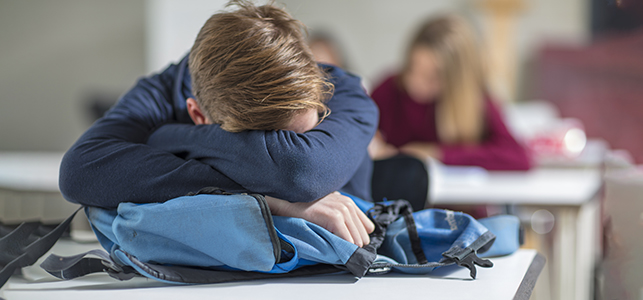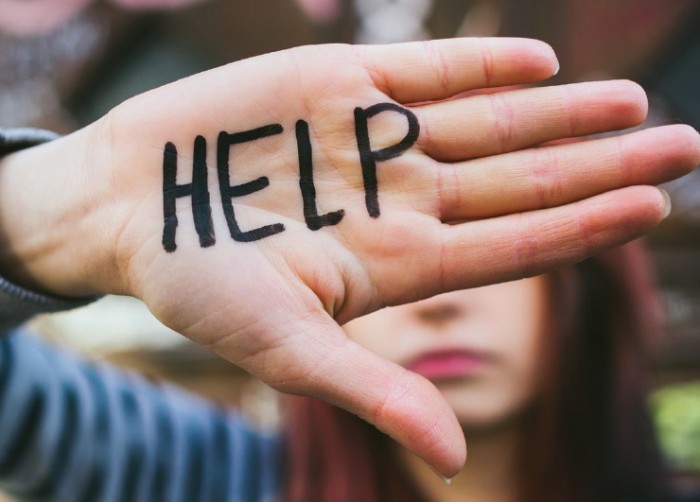
Childhood and the teen years are challenging under the best of circumstances. Additional stressors (family problems, bullying, trauma, sexual or gender identity issues, etc.), along with depression and anxiety, could result in thoughts of suicide or even a suicide attempt – and this is not at all rare. Suicide is the third-leading cause of death among children and adolescents. It’s important for all parents, teachers, caregivers, etc. to be aware of the facts, the warning signs/risk factors and how to help.
In the article below, Dr. Aradhana “Bela” Sood, child and adolescent psychologist at our Virginia Treatment Center for Children, expands upon suicide prevention information provided by the VTCC to highlight what every parent and caregiver needs to know about this important topic.

Know the warning signs and risk factors
Every child is unique and may display different warning signs, but be alert for dramatic changes in behavior. Here are the most common indicators for suicide among young people:
- Dramatic changes in personal appearance
- Changes in sleep patterns – difficulty sleeping or sleeping too much
- Changes in eating – loss of appetite or overeating
- Dramatic mood swings, severe anxiety or extreme agitation
- Sudden, unexplained recovery from profound depression
- Marked feelings of helplessness or hopelessness
- Engaging in risky behavior
- Loss of interest in usual activities
- Decline in school performance
- Alcohol or drug use
- Giving away special possessions
- Preoccupation with death and dying
- Communicating intent to kill or harm self
- Talking, writing or joking about suicide or death
- Self-injury (e.g., cutting)
Youth suicides in one’s community or in the news increase the risk of copycat behavior and are considered more of a risk factor if a child has underlying sadness/depression or has previously contemplated suicide. Previous suicide attempts and having experienced a significant loss are also risk factors for suicide.
Pay close attention to medications
Sometimes antidepressants, the very agents used to treat depression, could make the depressed person energized enough to act upon suicidal thoughts. Careful evaluation of whether an individual had experienced suicidal thoughts before starting antidepressants is important. Parents and caregivers need to be aware that “activation” can occur so that they are watching for this and know what might be going on in the child’s body and mind. The child or teen should also be aware of these potential effects so they can monitor what might be going in on their own body and mind. Consultation with the doctor when this energized, activated feeling appears is recommended.
Also, a list of all medications a child is taking should be always shared with any doctor a child sees as many medications may contribute to depression.
Take action
An estimated 86 percent of parents whose children attempted suicide did not know that their child was thinking of suicide. If you are at all concerned about a child or friend:
- Don’t hesitate to ask, “When things are not going well or you are feeling sad, does it ever get so bad that you think of killing yourself?” Be straightforward and direct. Generally, if the child is considering suicide this gives them an opportunity to bring forth those feelings and the probable cause, allowing an exploration and ultimately help. If they are not experiencing suicidal feelings, they will most likely deny it. Generally, children and adolescents are truthful about this and often are relieved to get a chance to talk about these feelings.
- If you believe your child is considering suicide or has attempted suicide, do not try to help the child alone – get help immediately. A good first person to talk to would be your child’s pediatrician who could assist or refer you to a specialist. Trying to get in with a specialist such as a child and adolescent psychiatrist, psychologist or licensed clinical social worker can be difficult the same day, but your pediatrician with whom you have a long-standing relationship would be most helpful in getting you an appointment with a specialist. If in crisis, calling 911 or going to an emergency room would be most advisable. Letting your pediatrician or a current mental health provider know what has happened is important so that follow-up care is in place after the emergency has been handled.
- For emergency situations, go to an emergency room or call 911.
Take precautions at home
The most common ways children and adolescents attempt suicide are:
- Guns
- Cutting with sharp object
- Poisoning/medication overdoses
- Strangulation/hanging
Make your home safer by taking the following precautions:
- Remove all alcohol and drugs from the house. These substances can impair your child’s judgment and be a risk for overdose.
- Hide or lock up your car keys. This prevents your child from self-harm using your car
- Remove or secure all guns. If you have a gun in your house or vehicle, use a gun lock and secure the gun in a locked place. Keep ammunition in a separate locked container.
- Lock all sharp objects in a box or the trunk of your car. This includes kitchen and pocket knives, razors, utility knives, box cutters, scissors and sharp hand tools.
- Secure all medications in a locked container. This includes both prescription and over-the-counter medications, including Tylenol, Advil, cough medicine, etc. Some over-the-counter medications are more dangerous than prescription medications in an overdose.
- Keep objects that could easily act as a noose secured when you cannot supervise their use. This includes ropes, belts, neckties, purse straps, electric cords, etc. Be sure to search every room in your house.
You’re not alone
There is help available for children and who are experiencing mental health issues and their families. Resources specifically related to suicide prevention include:
Suicide & Crisis Lifeline (24/7, free and confidential):
988 three-digit dialing code to connect with a trained counselor
800-273-TALK (8255)
800-799-4TTY (hearing and speech impaired)
Online emotional support: Lifeline Crisis Chat
Support through instant messaging: IMALIVE Online Crisis Network
Hotline for teens by teens: 877-YOUTHLINE (968-8454)
Hotline for LGBT and questioning youth: 866-488-7386 trevorproject.org
Suicide hotline: 800-SUICIDE (784-2433)
American Foundation for Suicide Prevention
Virginia Treatment Center for Children
Virginia Treatment Center for Children is Virginia’s premier child mental health service. VTCC offers clinical care for children ages 3 to 17; conducts research; provides a Children’s Mental Health Resource Center; and educates mental health and health care professionals, as well as the community as a whole, about children’s mental health. VTCC has a long history of successfully caring for children with a wide array of behavioral problems such as anxiety disorders, attention deficit hyperactivity disorders, depression, personality and mood disorders, trauma, and sexual abuse.
